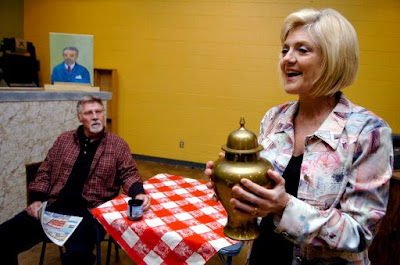In a previous post, 'Sanctuary: Living in the Cemetery', I looked at a situation in Africa, where governmental forces moved to evict impoverished people who were compelled to make their homes in the cemeteries there. The idea of people living among the dead may certainly seem disrespectful and unhealthy to many of us. In fact, there is an ancient and widespread taboo shared by many cultures that prohibits the dead from resting in the same space as the living, and vice versa. In the Christian tradition, however, church yards and cemeteries also have a history of functioning as sanctuaries and places of last resort for people without other options.

As these photos show, people throughout the world, including the Philippines, are compelled by economic and social circumstances to make their home among the dead, seeking sanctuary in the hallowed ground of cemeteries. They work, sleep, eat and play there; and while a cemetery may not be the most appealing place to live, there are certainly worse places.

Are these photos disturbing because we find the less than sacred activities of life disrespectful among the dead, or is it because we find it unhealthy or degrading for the living to be compelled to live among the dead? Are we concerned about the effect of the living on the dead, or the effect of the dead on the living? In any case, we realize that for many reasons, from sanitation, to our ideas of the nature of life and death, this taboo is still a powerful one for us.

Is this so different than keeping an urn with the cremated remains of our loved one at home with us though? Is it different from burying our loved ones on the family farm or scattering their ashes at the cottage? Some religious leaders would argue that it is not, and that for their own good, the dead must rest together in a community of saints until the resurrection.

This religious prohibition is no longer followed by as many people today. More and more, in a very mobile society, people choose to keep the ashes of infant children or parents with them because they may very well move across the country several times before dying themselves. They want their dead to move with them. Green burialists and others increasingly advocate for permission to bury outside traditional cemeteries. The dead are interred on farms and forests that may or may not be used for other purposes. The ashes of golfers and football fans are secretly scattered on the fairway and in the stadium.
As the wishes grieving families run afoul of religious and legal guidelines, those guidelines may adapt, they may turn back the tide, or they may be ignored. In any case, it is clear that our concepts of life and death, as well as the proper relationship between the two, are changing. Instead of the living moving into the cemetery though, it is the dead who are moving in with us.


No comments:
Post a Comment